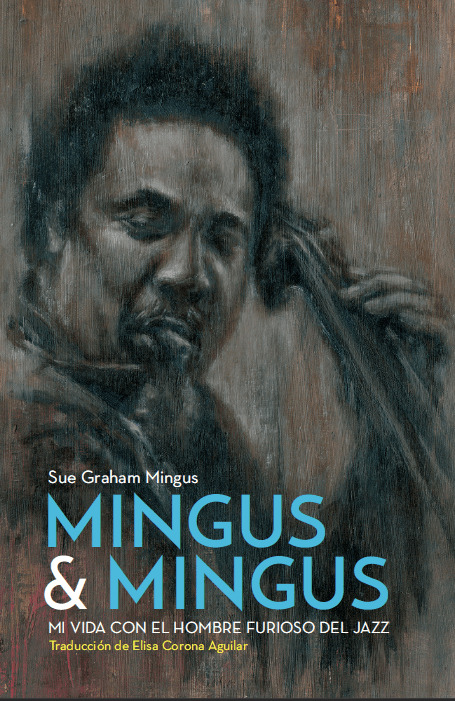I got the Slow Professor from a secondhand bookstore. Holding a book in your hands is always more fun than reading it in the computer. It’s probably also slower, and my eyes can always use less screen time. So I read this book and discover that my mother was a slow professor. She taught Political Science in the National Autonomous University of Mexico for forty-nine years. She retired last year, just one year before making it to fifty. When you do make it to fifty, the university awards you with a big gold medal. But my mother was happy with her 49 years, she’d already come a long way. My brother told her, “Who cares about the gold medal, I can buy you one!” The anecdote may sound silly, but to me it was an act of rebellion, showing we should care less about official awards, more about our health, our time with our family, our personal, private accomplishments, those that the academia doesn’t care that much for, like having children who have become independent, successful, and even able to buy you some luxuries, like a big gold medal.
So I probably learned it from my mother: I am a slow person, I’m proud of it, I do it on purpose most of the time. I left the academia for a good while as a declaration of slowness in times when most students went for graduate school right the way. I wanted to do other things with my life. I knew since I was very young that I wanted to be an artist, and that everything else could wait. Thus, I created unusual options for myself. I published books, won literary prizes, and had multiple music projects. After struggling for a long time, I can proudly say now that I have a career as a writer and a musician in my country, Mexico, where it is almost impossible to do that and still be able to pay your bills.
And while pursuing this, I also came to the US, where too often I hear the words “productive,” “efficient,” “ambitious,” words I never ever heard from my mother or her colleges to describe their work. I still don’t use them to describe my work. It was a big cultural shock when, coming from Mexican public education, I saw a bunch of computers at NYU with a sign that said “productivity station.” Or when trying to sign up for a class I discovered I had to put it in my “shopping cart.” Most shocking was to learn that this collection of words, productivity, efficiency, competitiveness, is sometimes used to advocate for people like me. In this country, as immigrants, every time we are threatened with deportation, the way corporations slash universities try to defend us is by talking about how productive we are, how efficient, little working creatures that do everything right, and bring so much wealth to the economy of this country. How could they think of getting rid of us?
This fantasy of our quasi-genetic productivity plays against us in the uneven ground of the US academics, where too often I’m reminded I am that kind of intruder, the one that came to steal your jobs! If I accomplish something, I’ll get some angry looks, snarky jokes – “oh, anyone can do that!” – and feedback, lots of unrequested feedback. When my white, male, American colleagues accomplish something, they’ll get woos, waaaus, congratulations, and lots of rubbing elbows. The ideal of collegiality invoked by the Slow Professor book is far from being what it should be.
In the US more than anytime in my life, I’m encouraged to do unpaid work, to apply for grants that I don’t need, to help in research that I’m not really interested in. I stick to the family tradition and keep refusing to do so. I’m also told I’m not supposed to be doing anything except concentrating in my PhD, and yet I keep doing so. I confess I rejected an Ivy League university after realizing it would imply losing some independence in my work, too much time on the subway, and not having lunch with my boyfriend as often as I like. Nowadays, in pandemic times, it still surprises me when many of my colleagues and professors have suddenly discovered that it is actually nice to have lunch with their loved ones.
I can say without regrets that I stick to slowness as much as I can, and I do it mostly by ignoring criticism, breaking a few of the rules, and asking myself constantly, what do I want my life to be like?
And yet the American culture of speed is not just about individual agency and personal habits. It is actually about getting a job or not, about tenure tracks, health insurances, also about immigration policies. It turns out that being an immigrant, an international student, a woman of color, can also play against my safety if I am too slow. I was in a special working permit once, thinking I was doing everything right, and suddenly, it turned out, that by being slow I became illegal. Long story short, I didn’t work enough days and that threatened my legal status. I didn’t think this was my fault, since I had asked my university, my employers, at least four times if everything was ok with my papers. In the end, I had to solve it the American way: I threatened a few people with lawsuits. And magically, it was done! A click in the computer, and I was legal again. This is how fake the system is, and yet there are not many chances to be slow within this system. I still try to take them all. I have found acts of collegiality and friendship with other students, American and immigrant, white and black, who are slow as me, who prefer having lunches, having babies, getting engaged! They organize collective readings like this one, too! Instead of being the productive student, the efficient professor. Maybe we’ve come to steal those jobs! In a very slow way. Maybe we’ll fail to do so, and end up jobless, illegal, or being sent back to our countries, for those of us who have the option of having another country.
This is not meant to discourage anyone from being slow, on the contrary. It’s meant to remind us that being slow is a privilege that not everyone has. Being slow can also mean taking risks that worth taking. Most importantly, slowness needs to be collective, if it is meant to be used as a way to transform the system. Otherwise you become just a lazy bum, but if we aim at collective slowness we become other things: anarchists, perhaps, socialists, that dreaded word in the US. We may even become rebels – and I remember that the symbol of the Zapatistas, the EZLN, is the snail, because they can walk long distances by doing it very slowly.
And I leave you now with a phrase by Hector Murena, a writer who said, “To sleep, to eat, to love, are despicable acts, wasted time, and the lights that shine the brightest in the night are those that come from second hand bookstores.”
Elisa Corona Aguilar
Washington DC, 2020












